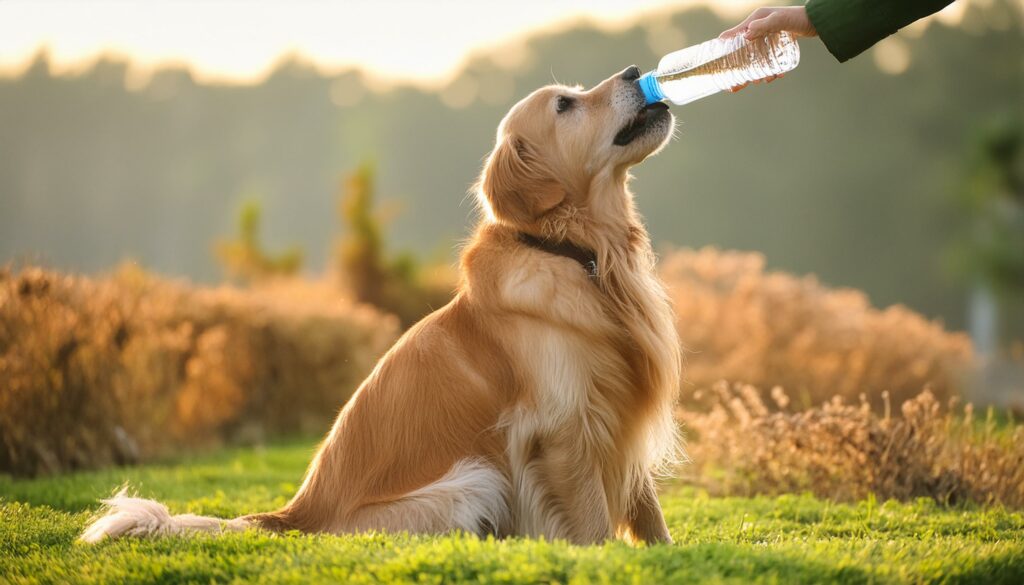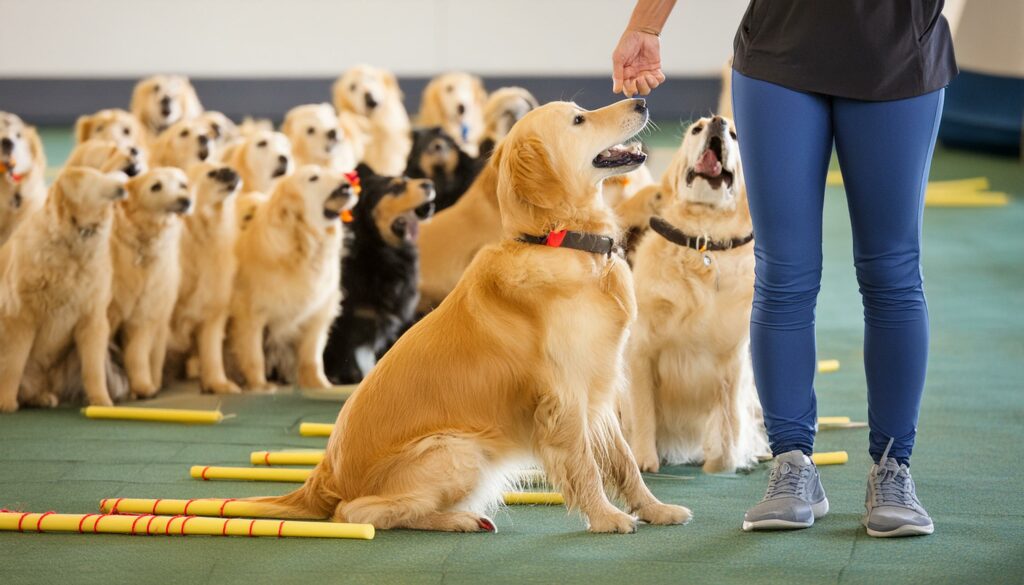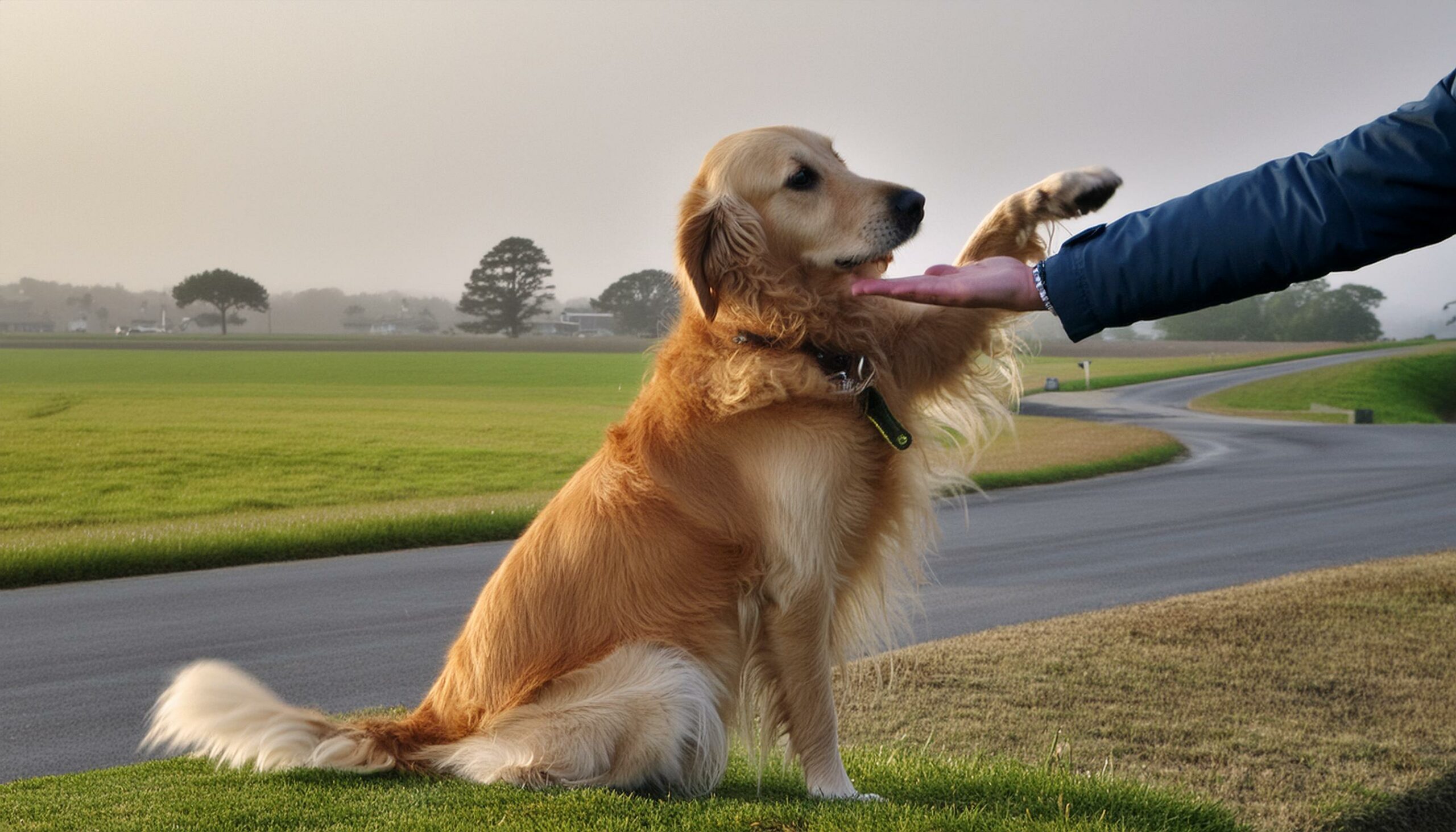Golden Retrievers are renowned for their friendly disposition and loving temperament. They thrive on human interaction and often seek out affection from their owners. Understanding their unique characteristics is crucial for establishing a strong emotional connection.
Characteristics of Golden Retrievers
Golden Retrievers are highly social animals that crave companionship. They are known for their intelligence, obedience, and eagerness to please, making them excellent family pets. These dogs are often affectionate, gentle, and tolerant, making them ideal companions for children and adults alike.
How They Express and Perceive Affection
Golden Retrievers express affection through various means, including physical touch, vocalizations, and body language. They enjoy being close to their owners, often leaning against them or sitting on their feet. Additionally, they may wag their tail, lick, or nuzzle their owners as a sign of love and affection.
Physical Affection
Physical affection is one of the most effective ways to bond with your Golden Retriever and make them feel loved and secure.

Petting and Cuddling Techniques
Golden Retrievers enjoy being petted and cuddled by their owners. When petting your dog, focus on areas they enjoy, such as behind the ears, under the chin, or along the back. Use gentle strokes and avoid rough handling, as this can cause discomfort.
Benefits of Physical Touch for Your Dog
Physical touch releases oxytocin, also known as the “love hormone,” in both humans and dogs. It promotes feelings of trust, relaxation, and happiness, strengthening the bond between you and your pet. Regular petting and cuddling sessions can also reduce stress and anxiety in Golden Retrievers.
Verbal Affection
In addition to physical touch, verbal affection plays a crucial role in communicating your love and appreciation to your Golden Retriever.
Talking to Your Golden Retriever
Golden Retrievers are highly responsive to their owner’s voice and enjoy hearing soothing and encouraging words. Take time to talk to your dog in a gentle and reassuring tone, using phrases like “good boy/girl” or “I love you.” Your voice serves as a source of comfort and reassurance for your pet.
Tone of Voice and Its Impact
The tone of your voice can convey a wide range of emotions to your Golden Retriever. Use a calm and friendly tone when expressing affection, and avoid raising your voice or using harsh commands. Positive verbal reinforcement strengthens the bond between you and your dog and encourages desirable behavior.
Quality Time
Spending quality time with your Golden Retriever is essential for nurturing your relationship and creating lasting memories together.
Engaging Activities to Bond With Your Dog
Golden Retrievers thrive on companionship and enjoy participating in various activities with their owners. Take your dog for daily walks, play fetch in the backyard, or engage in interactive games like hide-and-seek or agility training. These activities provide mental stimulation and physical exercise while strengthening your bond.
Importance of Spending Time Together
Quality time spent with your Golden Retriever strengthens the emotional connection between you and your pet. It reinforces trust, loyalty, and mutual affection, fostering a harmonious relationship based on love and companionship.
Positive Reinforcement
Positive reinforcement is a powerful tool for showing affection to your Golden Retriever and encouraging desirable behavior.

Reward-Based Training Methods
Golden Retrievers respond well to positive reinforcement training methods, which involve rewarding good behavior with treats, praise, or affection. Use treats as a motivational tool during training sessions and shower your dog with praise when they demonstrate desired behaviors. This creates a positive association with obedience and strengthens the bond between you and your pet.
Using Treats and Praise to Show Affection
Treats and praise are effective ways to show affection and reinforce positive behavior in Golden Retrievers. Offer verbal praise and physical affection, such as a belly rub or ear scratch, when your dog follows commands or exhibits good behavior. This strengthens the bond between you and your pet and encourages continued obedience.
Respect Your Dog’s Boundaries
While showing affection is essential, it’s equally important to respect your Golden Retriever’s boundaries and preferences.
Signs of Discomfort or Stress
Pay attention to your dog’s body language and vocalizations to identify signs of discomfort or stress. Signs may include yawning, lip licking, trembling, or attempting to move away. If your dog shows these signs, give them space and avoid forcing physical contact.
Giving Space When Needed
Golden Retrievers, like all dogs, have individual preferences when it comes to physical affection. Some may enjoy being cuddled and hugged, while others may prefer more space. Respect your dog’s boundaries and allow them to initiate contact on their terms.
Creating a Safe Environment
Creating a safe and comfortable environment is essential for fostering a sense of security and well-being in your Golden Retriever.
Providing a Comfortable Living Space
Ensure your home is a safe and welcoming environment for your dog. Provide a comfortable bed or crate where they can rest undisturbed and access to fresh water and food at all times. Minimize exposure to potential hazards and create a designated area for your dog to relax and unwind.
Ensuring Your Dog Feels Secure
Golden Retrievers thrive in environments where they feel safe and secure. Establish a routine and stick to a consistent schedule for feeding, exercise, and playtime. Provide plenty of opportunities for mental stimulation and companionship to prevent boredom and loneliness.
Health and Well-being
Maintaining your Golden Retriever’s health and well-being is crucial for their overall happiness and quality of life.
Regular Exercise and Outdoor Play
Golden Retrievers are active and energetic dogs that require regular exercise to stay healthy and happy. Take your dog for daily walks, runs, or hikes to provide physical exercise and mental stimulation. Engage in interactive games and activities that allow your dog to burn off excess energy and satisfy their natural instincts.
Proper Nutrition and Grooming
Provide your Golden Retriever with a balanced diet tailored to their age, size, and activity level. Choose high-quality dog food that meets their nutritional needs and avoid overfeeding or feeding table scraps, which can lead to obesity and health problems. Additionally, maintain a regular grooming routine to keep your dog’s coat clean and healthy, including brushing, bathing, and nail trimming.
Socialization

Socialization plays a vital role in shaping your Golden Retriever’s behavior and temperament, ensuring they grow into well-adjusted and confident dogs.
Exposing Your Golden Retriever to Different Experiences
Expose your Golden Retriever to a variety of people, animals, and environments from a young age. Take them to obedience classes, dog parks, and pet-friendly events to socialize with other dogs and people. This helps them develop essential social skills and builds their confidence in different situations.
Building Confidence and Trust
Socialization builds confidence and trust in your Golden Retriever, making them more resilient and adaptable to new experiences. Encourage positive interactions with strangers and reward calm and confident behavior. With time and patience, your dog will become more comfortable and relaxed in various social settings.
Understanding Body Language
Understanding your Golden Retriever’s body language is key to interpreting their feelings and emotions accurately.
Signs of Happiness and Contentment
Golden Retrievers exhibit various signs when they’re happy and content, including a relaxed body posture, wagging tail, and bright, alert expression. They may also lean against you, seek physical contact, or playfully nudge your hand for attention. Recognize these signals as indicators of affection and respond accordingly.
Recognizing Signs of Affection From Your Dog
Pay attention to how your Golden Retriever expresses affection towards you. They may greet you enthusiastically when you come home, follow you around the house, or curl up beside you on the couch. Acknowledge and reciprocate their affectionate gestures to strengthen the bond between you and your pet.
Consistency and Routine
Consistency and routine are essential for establishing a strong and lasting bond with your Golden Retriever.
Establishing a Daily Routine
Establish a consistent daily routine for feeding, exercise, training, and relaxation. Dogs thrive on predictability and routine, as it provides structure and stability in their lives. Stick to a regular schedule for meals, walks, and bedtime to create a sense of security and familiarity for your pet.
Consistent Affectionate Behavior
Consistency is key when it comes to showing affection to your Golden Retriever. Make a habit of expressing your love and appreciation to your dog through physical touch, verbal praise, and quality time together. Consistent affectionate behavior reinforces the bond between you and your pet and strengthens the foundation of your relationship.
Incorporating Affection Into Training
Training provides valuable opportunities to strengthen the bond between you and your Golden Retriever while teaching essential skills and behaviors.
Using Affection as a Motivator
Golden Retrievers respond well to positive reinforcement training techniques, which involve rewarding good behavior with treats, praise, or affection. Use affection as a motivator during training sessions to encourage your dog to learn new commands and behaviors. Shower them with praise and affection when they successfully follow instructions, reinforcing their positive efforts.
Incorporating Training Into Everyday Interactions
Integrate training into your daily interactions with your Golden Retriever to reinforce obedience and strengthen your bond. Use everyday situations, such as mealtime, walks, and playtime, as opportunities to practice commands and reinforce desired behaviors. Be patient and consistent, and remember to reward your dog with affection for their efforts and progress.
Addressing Behavioral Issues
Addressing behavioral issues promptly and effectively is essential for maintaining a harmonious relationship with your Golden Retriever.
Redirecting Negative Behaviors With Affection
When addressing behavioral issues, focus on positive reinforcement and redirection rather than punishment. Use affection as a tool to encourage desirable behaviors and discourage unwanted ones. For example, if your dog jumps up on guests, redirect their attention with a command and reward them for sitting calmly instead.
Seeking Professional Help if Needed
If you’re struggling to address behavioral issues or if your Golden Retriever exhibits aggressive or problematic behavior, seek professional help from a certified dog trainer or behaviorist. They can assess the situation, provide personalized guidance, and develop a behavior modification plan tailored to your dog’s needs.
Conclusion
Showing affection to your Golden Retriever is essential for nurturing a strong and loving bond between you and your pet. By understanding their unique needs and preferences, incorporating affectionate gestures into your daily routine, and respecting their boundaries, you can create a happy and fulfilling relationship built on trust, love, and mutual respect.
FAQs (Frequently Asked Questions)
How often should I show affection to my Golden Retriever?
It’s essential to show affection to your Golden Retriever regularly, but the frequency may vary based on your dog’s individual preferences and needs.
What if my Golden Retriever doesn’t like physical affection?
If your dog doesn’t enjoy physical touch, respect their boundaries and find other ways to express your love and appreciation, such as verbal praise or quality time together.
Can I spoil my Golden Retriever with too much affection?
While affection is essential, it’s essential to maintain a balance and avoid overindulging your dog, which could lead to behavioral issues or dependency.
How do I know if my Golden Retriever is happy and content?
Look for signs of relaxation, playfulness, and engagement, such as a wagging tail, bright eyes, and a relaxed body posture, to gauge your dog’s happiness and contentment.
What should I do if my Golden Retriever shows signs of discomfort or stress during affectionate interactions?
Respect your dog’s cues and give them space if they show signs of discomfort or stress. Pay attention to their body language and adjust your approach accordingly to ensure they feel safe and secure.
